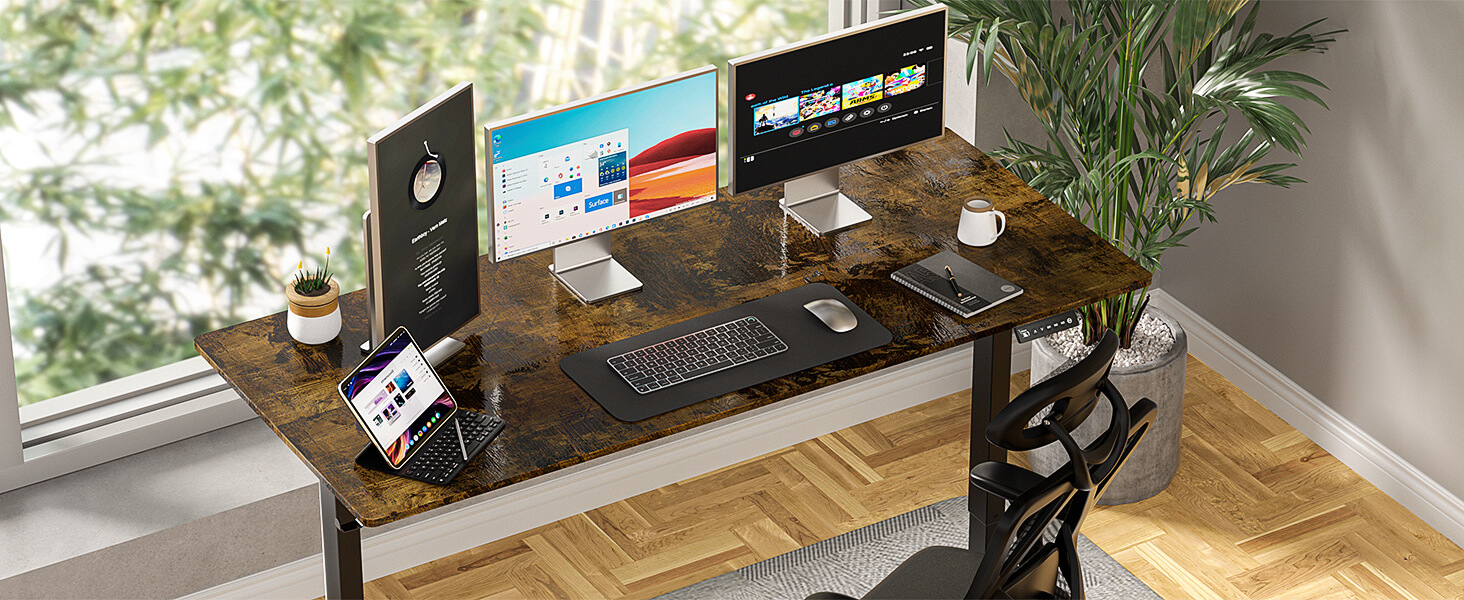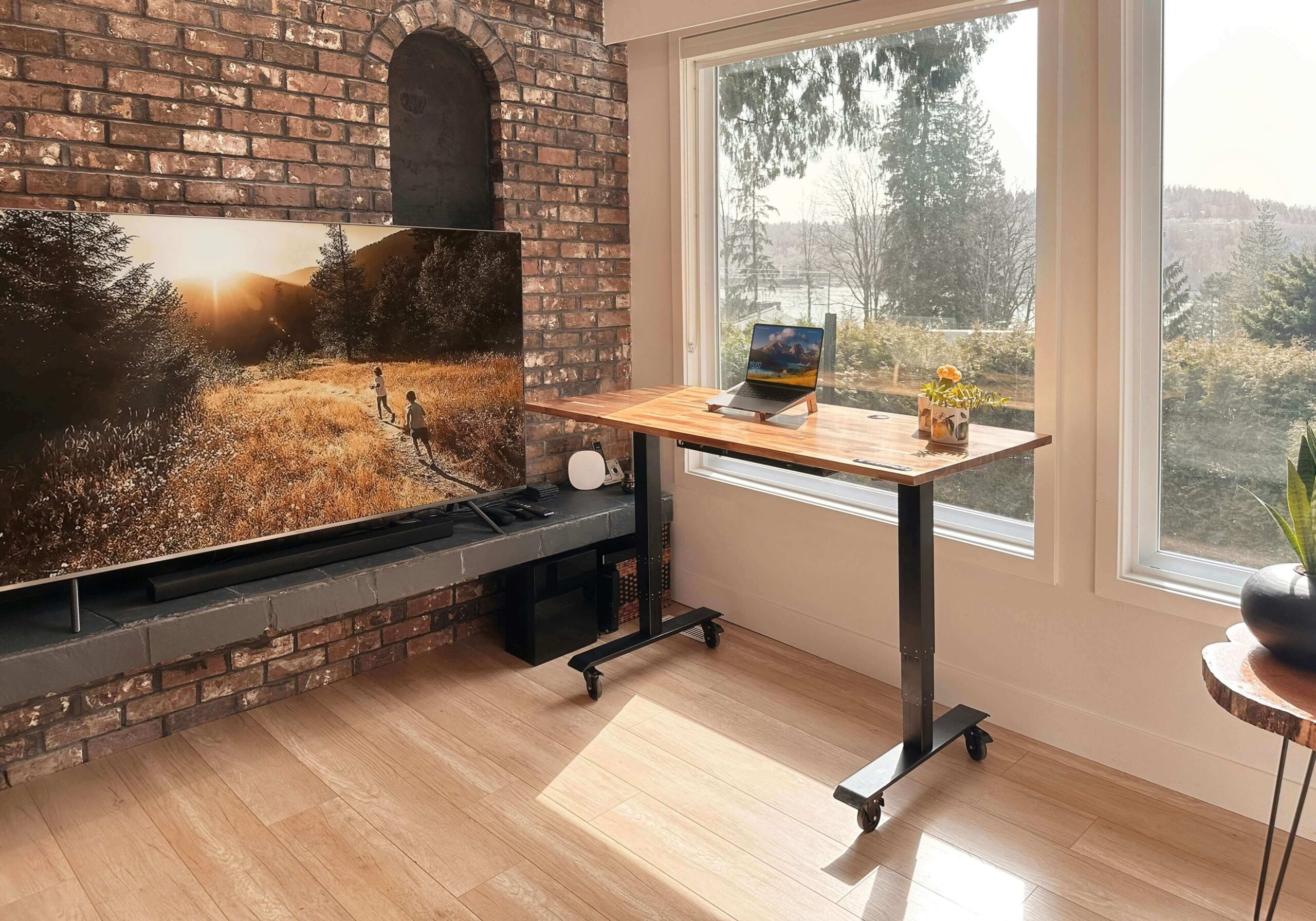Remote work and digital nomadism are on the rise. With more people working from home or while traveling, it’s important to address the challenges of sedentary lifestyles. One solution is the standing desk. This adjustable desk allows you to alternate between sitting and standing, which has proven benefits for both physical and mental health. In this article, we explore how standing desks can improve the well-being and productivity of remote workers and digital nomads.
The Sedentary Problem in Remote Work
Remote work offers flexibility, but it often leads to long hours of sitting. Many workers spend entire days in front of a computer screen without thinking about their posture. Sitting for too long can lead to back pain, poor posture, and even serious health problems like heart disease. For digital nomads, the situation is even more complicated. With inconsistent workspaces such as cafes or hotel rooms, it’s easy to neglect ergonomics.
The key to solving this problem lies in standing desks.

Standing Desks: A Simple Solution
Standing desks are adjustable desks that let you switch between sitting and standing. This flexibility helps break up long periods of sitting, encouraging more movement throughout the day. Studies show that standing desks can reduce discomfort, improve circulation, and prevent long-term health issues caused by sitting.
Standing desks are especially useful for remote workers and digital nomads, who often lack the support of a traditional office setting.
Health Benefits of Standing Desks for Remote Workers
1. Reducing Back Pain and Improving Posture
Back pain is one of the most common complaints among remote workers. Sitting for hours in a poor posture strains the spine and lower back muscles. Over time, this can cause chronic pain. Standing desks encourage better posture and reduce pressure on the spine. Standing upright also strengthens core muscles, which improves overall posture and reduces back pain.
2. Boosting Energy and Productivity
Remote workers often struggle with energy levels. The lack of an office structure can lead to feelings of fatigue. Standing helps increase blood flow and energy levels. It reduces tiredness and boosts alertness. As a result, remote workers who use standing desks report higher productivity and greater mental clarity.
3. Better Circulation and Lower Health Risks
Sitting for long periods can lead to poor circulation and increase the risk of blood clots. It is also linked to diseases like diabetes and heart disease. Standing desks promote better circulation by encouraging movement throughout the day. With better blood flow, the risk of these health problems is reduced.
4. Weight Management
Weight gain is often a concern for remote workers. Sitting all day burns fewer calories, which can lead to weight gain over time. Standing burns more calories, contributing to better weight management. Although standing isn’t a substitute for regular exercise, it’s a helpful step toward staying active during the workday.
Mental Health Benefits of Standing Desks
Remote workers and digital nomads often face mental health challenges. Isolation, stress, and anxiety are common. Standing desks can help improve mental well-being by reducing stress and boosting mood. Physical activity, even at low levels, releases endorphins, which are known to improve happiness and reduce stress.
1. Reducing Stress
Standing for just a few minutes every hour can help lower stress levels. This simple act encourages movement and boosts the mood by releasing endorphins. As a result, remote workers feel more relaxed and focused, helping them to combat the stress that can come with remote work.
2. Improved Focus and Mental Clarity
Standing desks not only benefit physical health but also enhance cognitive function. By increasing blood flow to the brain, standing helps improve concentration and mental clarity. This makes it easier to stay on task, especially during long working hours. Remote workers who alternate between sitting and standing report feeling more alert and productive.
The Flexibility of Standing Desks for Digital Nomads
For digital nomads, flexibility is key. Whether working from a cafe, co-working space, or hotel, having the option to switch between sitting and standing can make a big difference. Standing desks are portable and adjustable, so they can fit into any environment. This adaptability helps digital nomads maintain a comfortable and ergonomic workspace no matter where they are.
Conclusion: A Simple Step Toward Better Health and Productivity
Standing desks are a powerful tool for remote workers and digital nomads. They provide a simple way to break up long periods of sitting and improve overall health. By reducing back pain, boosting circulation, and increasing energy, standing desks can improve both physical and mental well-being. For remote workers and digital nomads, standing desks are more than just a trend—they are a solution to the challenges of modern work environments.
By incorporating standing desks into your daily routine, you can stay healthier, more focused, and more productive. Whether you work from home, a co-working space, or while traveling, a standing desk can help you take control of your health and workday. It’s an easy, effective way to improve your overall well-being.
